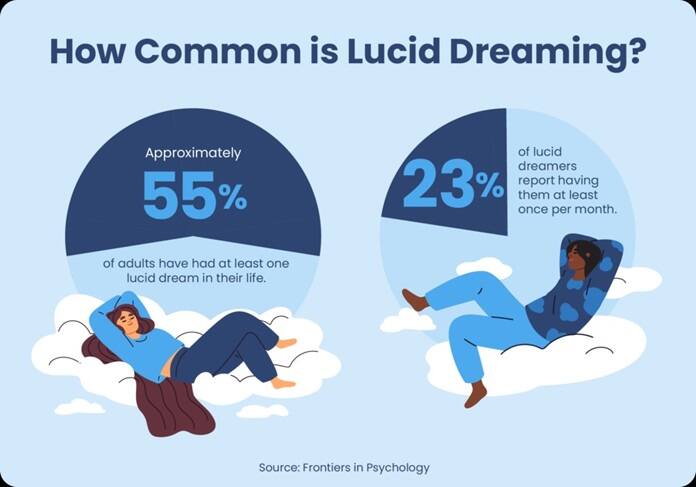The inexplicable nature of dreams has always sparked human curiosity. They are a fascinating yet perplexing phenomenon that has been studied from diverse angles. This piece aims to provide a detailed exploration of dream science, analyzing it from psychological, neuroscientific, and cultural perspectives. As we delve into the enigmatic realm of dreams, we will witness the sleeping mind painting vivid landscapes that seem to be a product of pure imagination. Our journey will lead us to unravel the deepest mysteries of the dream world, uncovering the scientific underpinnings of this elusive phenomenon. So, let’s embark on a journey of discovery, as we unravel the secrets of dreams and explore their intricate details.

The Brain in Slumber
As the body begins its journey into slumber, the brain works tirelessly, orchestrating a symphony of neural activity. The initial sleep phase is characterized by a slowing of brain waves and a decrease in muscle activity. This is followed by the transitional stage where the body temperature drops, the heart rate slows, and breathing becomes even more regular. As we delve deeper into sleep, we enter the deep sleep phase, where the brain produces slower waves, and it becomes harder to wake up. Finally, we reach the stage of REM sleep, where the brain produces fast and random activity, and our eyes move rapidly beneath our eyelids. It is during this stage that we often experience vivid dreams.
Psychological Analysis of Dreams
Dreams have been interpreted as a window into our subconscious minds from a psychological standpoint. Sigmund Freud, the father of psychoanalysis, believed that dreams are a manifestation of our repressed desires and unresolved conflicts. He argued that the content of dreams, often coded in symbolic language, can provide valuable insights into our innermost thoughts and feelings.
However, other psychologists have challenged Freud’s theory. Carl Jung proposed that dreams are not just personal but also tap into a collective unconscious shared by all humans. He suggested that dreams can serve as a guide for personal growth and self-realization.

If you delve into the diverse interpretations of dreams, from Freud’s psychoanalytic perspective to modern cognitive theories, you can explore how cultural and personal experiences shape the symbolism and themes of our dreams. Dreams offer glimpses into our subconscious thoughts and desires, and understanding them can help us gain insights into ourselves.
The Neuroscience of Dreams
Neuroscience offers a different lens through which we can view dreams. According to the activation-synthesis hypothesis proposed by J. Allan Hobson and Robert McCarley, dreams are the brain’s way of making sense of random neural activity during sleep. This theory suggests that dreams don’t necessarily have inherent meanings but are rather a by-product of our brain’s attempt to interpret these random signals.
On the other hand, recent neuroimaging studies have shown that dreaming involves specific areas of the brain associated with memory, emotion, and visual imagery. This suggests that dreams may indeed have a function, possibly related to memory consolidation or emotional processing.
Advances in neuroimaging techniques have provided unprecedented insights into the neural correlates of dreaming. Learn how fMRI and EEG studies unravel the neural signatures of dreaming, shedding light on the brain mechanisms underlying this fascinating phenomenon.
Cultural Interpretations of Dreams
Dreams hold different meanings across various cultures. In some indigenous societies, they are believed to be a medium of contact with the spiritual realm or a way of receiving divine messages. On the other hand, scientific research has demystified dreams in the Western world. Nevertheless, the curiosity about interpreting dream symbols remains, which is evident in the increasing demand for dream dictionaries and guides.
Lucid Dreaming
Step into the captivating universe of lucid dreaming, where dreamers can actively control and comprehend their dream state. Delve into the fascinating scientific study of lucid dreaming and its ability to offer potential benefits in various fields such as therapy, artistic expression, and innovative thinking. With lucid dreaming, one can gain a unique insight into the subconscious mind and unlock a world of endless possibilities.

Comparative Analysis: Bridging the Gaps
Although each perspective offers unique insights into dreams, none can fully explain this complex phenomenon. The key to understanding dreams lies in a multidisciplinary approach that integrates psychological, neuroscientific, and cultural viewpoints.
As we unravel the science behind dreams, we discover that the sleeping mind is not simply a passive observer but an active participant in a complex cognitive process. Our exploration of the sleeping mind reveals a landscape rich with scientific inquiry and practical implications, from the enigmatic symbolism of dreams to the therapeutic potential of lucid dreaming.
Through ongoing research, we gain deeper insights into the workings of the human mind, unlocking new frontiers in both science and self-understanding. Dreams remain one of the great mysteries of human consciousness, a testament to the unfathomable depths of our minds, and a nightly journey into the unknown.
As we continue to explore the science behind dreams, we will uncover more about not just our sleeping minds, but our waking selves as well. In my journey exploring the science of dreams, I have found that the more we learn, the more questions arise. The dream world is a vast and uncharted territory, a realm of endless fascination.
As we delve deeper into this mysterious landscape, we will find that dreams are not just idle fantasies but a vital part of our human experience.
Also, read more about, The Impact of Noise on Sleep: Creating a Quiet Sleep Environment for Peaceful Rest.
